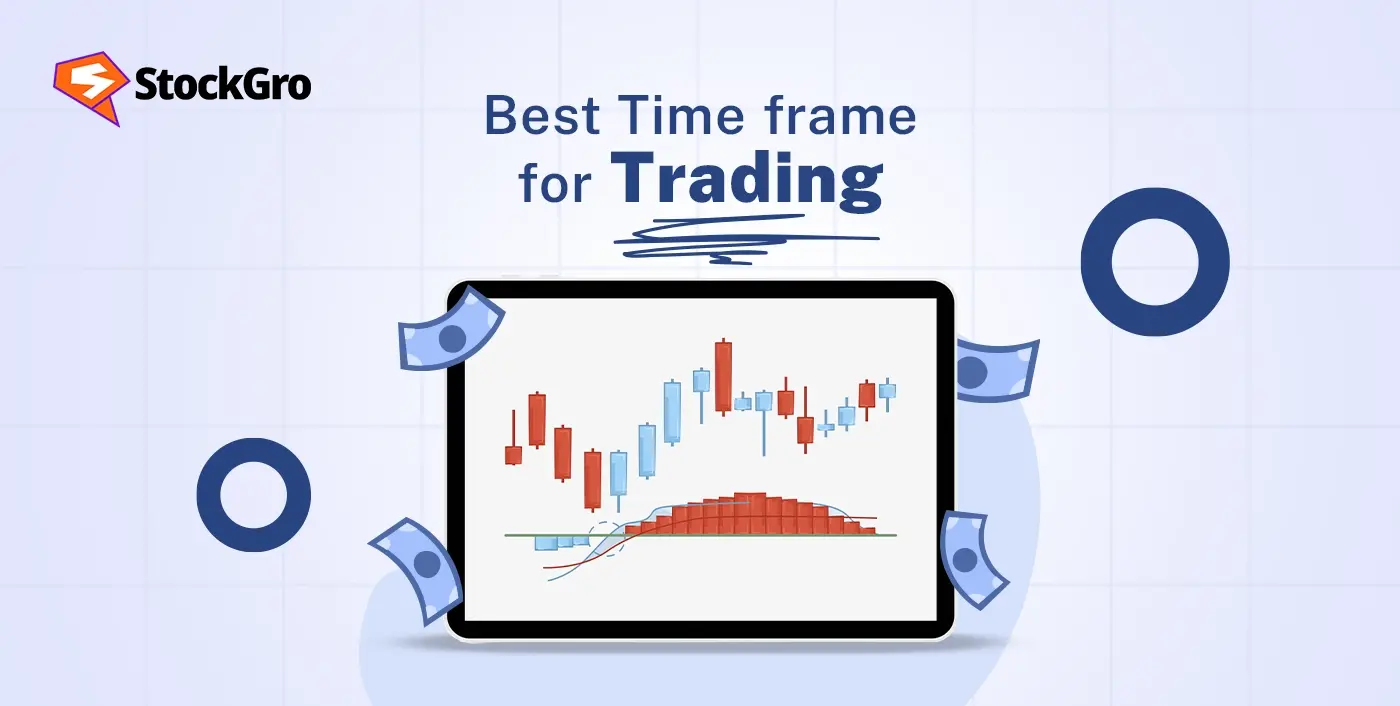
Intraday trading involves executing both purchase and sale of a financial asset within a single market session. This approach targets capturing small price movements, not long-term accumulation. The nature of such trading demands precision.
In this context, the best time frame for intraday trading becomes a decisive element. Therefore this blog breaks down how to choose the right one for your strategy.
What is Intraday Time Analysis?
It refers to watching how prices move within one trading day.It helps identify patterns that develop over short intervals. Traders use real-time charts to follow market momentum, identify signals and time their entries & exits more effectively.
The regular trading window carries the core of daily activity. It captures the momentum and reactions to domestic and global factors within one continuous stretch.
| Session | Activity | Timing (IST) |
| Regular trading session – Mon to Fri (except public holidays) | Market open | 09:15 hrs |
| Market close | 15:30 hrs |
The Best Time Frame for Intraday Traders
Every trader engages with the market differently. Your selected time frame should match how you interpret movement and manage exposure. Each window brings a unique tempo. Here’s how they compare:
- Morning session: The slot around 9:15-10:30 am, reflects overnight sentiment and fresh inputs. Movements can be erratic, but this volatility appeals to those using momentum-based strategies.
- Mid-day phase: This session around 11:30-1:30 pm, generally moves at a slower pace. The pace slows and market behaviour becomes more stable. This environment may suit those who prefer stable patterns and managing risk with greater control.
- Closing hour: Later in the day nearing 2:30-3:30 pm, activity often picks up again. Activity intensifies as traders square off before the close. This stretch may favour strategies that seek to capture final directional moves before the session ends.
Types of Intraday Trading Chart Time frames
Chart intervals define how price behaviour is segmented across the day. Each window sets a different rhythm for decision-making.
Short ones, like 1 or 5-min, show quick moves but add noise. For example, if a stock displays a sudden rise in both price & volume on a 5 min chart, a trader might treat it as a breakout and prompting a short-term position, aiming to exit within minutes.
Longer ones, like 15 or 30-min, highlight clearer trends with fewer actionable signals. The ideal choice depends on your method, comfort with pace, and how the market breathes in that session.
| Interval | Best applied when | Notable benefits | Caution point |
| 1-minute | Targeting scalping in highly active conditions | Tracks every small price move in real time | Prone to overreaction and limited trend clarity |
| 5-minute | Momentum and short-term strategies | Balances detail and clarity, widely used by active traders | Still vulnerable to false signals and unclear momentum. |
| 15-minute | Tracking early trend formation | Reduces noise, helps define support and resistance levels | May not react quickly to sharp reversals |
| 30-minute | Broader trend following within the trading day | Offers cleaner signals, filters short-term market noise | Requires patience, fewer entries and exits |
| Hourly | Structural market analysis and swing trades | Highlights major trends, fewer false signals, useful for high-probability setups | Longer wait times, wider stop-loss levels may be needed |
How to Choose the Best Time Frame for Your Strategy
The right time frame isn’t fixed. It depends on how you approach the market and adjust to volatility.
Some traders use multiple time frames together. For example, a broader chart to observe trend direction, and a shorter one to plan entry. And sometimes, newer traders sometimes avoid high-volatility periods and favour more stable stretches with fewer sudden movements.
In the end, the most suitable interval is one that matches your strategy’s tempo, respects your risk boundaries and allows for clear interpretation under real conditions.
Trading at the Opening of the Market
As noted earlier, the session open tends to carry the weight of overnight momentum. Price action can be erratic, driven more by reaction than pattern.
Some traders engage early, seeking breakout opportunities. However, it also carries more risk and demands faster decisions. Others prefer to observe, allowing price behaviour to reveal a clearer pattern.
When approached with preparation, this window offers both opportunity and risk. Success here often comes not from speed but from sensing when the noise settles and the signal begins.
Importance of Intraday Trading Charts
Day charts serve as a practical foundation for short-term market analysis. They provide structure to decision-making by offering a clear visual of price development within specific time intervals.
- Charts allow you to spot short-term trends and reversal points with more precision
- They help reduce guesswork by filtering out noise based on your selected time interval
- Defined chart views support better stop-loss placement and profit targets
- The selected time frame shapes how you manage risk and recognise opportunity
Bottomline
Choosing the right time frame matters, but execution defines impact. A defined plan, clear exit points and risk controls are also essential. Avoid reacting emotionally or trading without reason. Moreover, staying informed helps filter such noise from actual signals. In intraday trading, consistency depends less on speed and more on how you manage each move within the chosen window.
FAQs
Market tone shifts throughout the day. Early moves often reflect overnight sentiment and short bursts of volatility. Midday tends to quieten, offering fewer sharp turns. Toward the close, activity rises again as positions are adjusted. How you approach each segment matters. What suits one setup may not suit another. Matching the window to your method matters more.
The opening session often brings sharp reactions to overnight cues. Price can move fast without clear direction. Volume is high but not always stable. For some, it offers early setups. Others prefer to wait for clearer signals. The right choice depends on preparation, not the time frame.
Most platforms set a cut-off before the market closes. This buffer helps exit open trades automatically. Timings differ across segments. Some close around 3.15 pm while others extend to 3.20 pm. Commodities often follow a separate schedule. It’s best to check with your provider. Relying solely on auto square-off can expose you to avoidable risk.
MTF analysis involves viewing a setup through more than one chart interval. Each view shows a different layer of market behaviour. A short frame may reveal entry conditions. A broader one can confirm direction or strength. This approach reduces narrow focus and adds context. It can help refine timing and avoid weak trades.
Choosing the right window helps you read the market with better focus. It sharpens timing and reduces noise. Patterns become clearer when the pace suits your method. Acting in sync with movement can lower uncertainty. Fewer missteps often come from better alignment. Outcomes tend to reflect preparation over impulse.
Candlestick views offer more than just price points. They show intent, hesitation, and strength. Short intervals capture quick shifts but can be noisy. Mid-range views may reveal structure with fewer distractions. The choice often depends on how you read patterns and react to movement. One view won’t suit every setup.
The best entry time is usually between 9:30 AM and 11:00 AM, after the initial volatility settles and a clear trend begins to form. Avoid the first 5–10 minutes, as price swings are unpredictable.
For most intraday strategies, 5-minute and 15-minute candles work best. The 5-minute chart gives quicker signals, while the 15-minute chart provides smoother trend confirmation.
A combination of 5-minute, 15-minute and 1-hour timeframes is ideal. Use 1-hour to identify the bigger trend, 15-minute for confirmation, and 5-minute for precise entries and exits.

